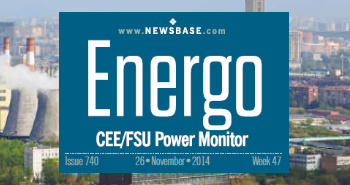Moldova faces power blackouts after Transnistria halves electricity supplies

The MoldGRES power plant in Moldova’s separatist Transnistria region halved its production and supply as of October 24, after the separatist authorities declared a state of emergency citing the 30% reduction in the volume of gas sent by Gazprom to Moldova starting with October 1.
Electricity from MoldGRES now covers just 27% of consumption in the part of Moldova under Chisinau’s control, down from 70% previously. The authorities claim that the system is under control, but the magnitude of the deficit to be covered from the spot market is so high that avoiding temporary blackouts will be challenging.
Commenting on the steps to be taken, Deputy PM Andrei Spinu said Moldova will sign more import contracts, will transfer more gas (of the limited supplies) to MoldGRES and will seek ways to cut consumption.
Transnistria closed down its steel mill (the separatists' main source of income) and cement plant, in order to share the gas among households, social institutions and the MoldGRES power plant. The power plant reportedly holds coal stocks as well, but the separatist authorities made clear that they are only for domestic consumption and only when there is no gas at all.
The halving of the power supplies from Cuciurgan in Transnistria deepened Moldova’s power deficit during daytime hours (7am to 11pm) to 284MW, or roughly one-third of the country’s total needs, according to estimates by state company Energocom, the body in charge of contracting power abroad. The transfer capacity from Romania is only 235MW, even after a recent upgrade. Furthermore, the electricity imported from the spot market (in Romania or a country synchronised with Romania) will be very expensive. Hidroelectrica already delivers electricity under a bilateral contract at the capped price (€90 per MWh until end-October), reportedly at a rate of 100MW. But Spinu announced no supplier other than Romania when commenting on the supplementary 100MW (most likely, supplementary transfer capacity, as opposed to power contracted).
The power plant in Transnistria, controlled by the Russian group Inter RAO, will further reduce its power deliveries as of November 1, unless Gazprom provides more gas to Moldova, separatist leader Vadim Krasnoselsky stated. Previously, he claimed that Gazprom implied a 40% cut in the gas supplies to Moldova as of November 1.
Under the state of alert in the energy system, already in force in Moldova, the two power distribution companies in the country are entitled to disconnect users if asked to adapt to limited resources and deliveries. If possible, the consumers will be informed in advance, Premier Distribution (one of the two distribution firms) commented.
Gazprom’s lack of transparency on its future supplies already generated anxiety among the authorities in Chisinau, who have to find suppliers for over 40% of the country’s electricity on short notice, on top of the 30% left uncovered after Ukraine suspended electricity exports on October 11.
Despite Moscow's longstanding support for Transnistria, separatist leader Krasnoselsky claims that Gazprom didn’t inform Tiraspol in advance about the cut in the gas supplies made as of October 1, so they signed the electricity contract with Moldova’s Energocom based on the gas amounts promised under the contract. This is plausible, assuming that Gazprom’s purpose was to increase the uncertainty between the two sides in Moldova, which so far have avoided direct confrontation.
On the same note, Moldovagaz CEO Vadim Ceban claimed that Gazprom (their main shareholder) hasn’t confirmed yet the gas amounts to be delivered in November (if any).
The transfer capacity from Romania to Moldova reportedly rose from 135MW to 235MW. But finding suppliers will be problematic (in addition to costly) since this is becoming increasingly problematic for the Romanian companies as well. Hidroelectrica reportedly volunteered for a first bilateral contract with Moldova’s Energocom (at a subsidised price of €90 per MWh), as of October 14, but not many Romanian producers can afford this. Energocom will have to buy from Romania’s centralised market, including from the day-ahead market, in order to import electricity in Moldova, and this will certainly increase the average price of electricity consumed in Moldova.
A week earlier, Ukraine suspended its electricity supplies to Moldova, which at that time were nearly 30% of Moldova proper’s consumption.
Romania’s Hidroelectrica quickly replaced the Ukrainian suppliers at reasonable prices, providing electricity at a rate of up to 100MW as of October 14 and 135MW a couple of days later (the exact amounts or terms of the contract were not disclosed).
As of October 24, Romania will make available electricity at a rate of 235MW, announced Spinu.
For comparison, Moldova proper can generate up to 100MW in its combined heat-power plants and the small hydropower group. MoldGRES can generate at a rate of 600MW (from local consumption and export to Moldova proper) with the gas it receives currently, according to estimates by FEE Nord, the other power distribution company in Moldova, besides Premier Energy.


Follow us online